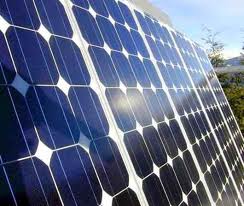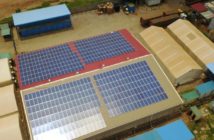HUFFINGTON POST
Every hour the sun bathes Earth with as much energy as all human civilization uses in an entire year. Let me tell you about some spectacular and pragmatic solar technologies helping to reduce our global carbon footprint.
Austrian and Japanese scientists have recently pioneered solar cells thinner than a thread of spider silk. These new ultra thin solar cells are so flexible they can be wrapped tightly around a single human hair.
These extremely thin, light and flexible solar cells will power devices like portable electrical charging units or electronic textiles worn on clothing. And they are set to replace, in the very near future, batteries that power health sensors monitoring elderly or infirm people.
Australian researchers from The University of Melbourne and CSIRO have developed solar panels, which can be painted or printed directly onto surfaces. These solar cells are so small they can be suspended in liquid such as ink. The nano-crystals have a diameter of just a few millionths of a millimeter.
UCLA scientists have invented solar cells from transparent organic polymers that are more durable and malleable than silicon. These clear solar cells will be applied to windows enabling them to generate energy. They will also be used in laptops, mobile phones and on airplanes.
Last month (July 2012) the University of Michigan won its fourth straight car race at the American Solar Challenge. The 8-day race that started in Rochester, NY covered 1,650 miles and ended in St Paul, Minn. The UM car Quantum beat 17 other competitors and triumphed despite rain on the second and last day.
Also last month, Solar Impulse, a solar airplane, completed a 4,000-mile intercontinental journey, which commenced in Payerne, Switzerland and flew to Rabat, Morocco before returning to where it began. This sleek-looking aircraft is outfitted with 12,000 solar cells, and in April of 2010 it successfully undertook a 26-hour flight.
Germany is currently the world’s leading solar power producer at 22 gigawatts, equivalent to 20 nuclear power stations running at full capacity. Solar energy supplies Germany with one third of its electricity during workdays and almost half its power on weekends when factories and offices are closed.
The Obama Administration has quietly approved 16 large-scale solar projects on public lands so far, and recently began a fast-tracking of 17 more tracts for large-scale solar projects across the West. These made in America solar farms will provide an additional 5,700 megawatts or enough power for 1.7 million homes.
Once upon a time solar was about three times more expensive than subsidized natural gases. But since the scale of economy for solar has ramped-up, its price has tumbled by two-thirds. In fact, from 2009-2010 solar in the U.S. grew by102 percent. By 2016, less than three and a half years from now, solar and fossil fuels will be able to compete head to head.
It’s a no-brainer, made in America solar or fracking and foreign oil?
We have firmly entered The Age of Energy Transformation and third generation solar technologies will be ready for the market place within 24 months.
From everyday products to windows and rooftops, solar technologies are here; and within years rather than decades they will become part of everyone’s daily lives.
Earth Dr Reese Halter is an award-winning broadcaster and distinguished biologist. His latest books are: The Incomparable Honeybee and The Insatiable Bark Beetle.
.








